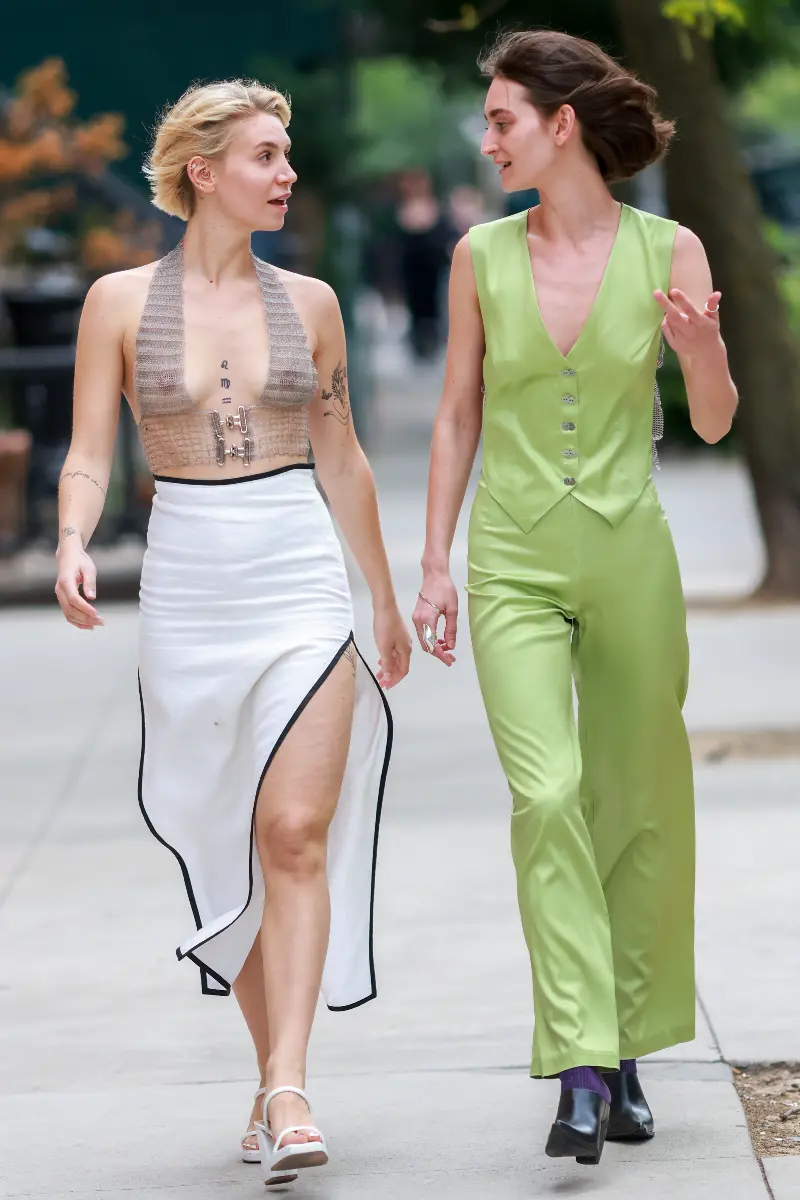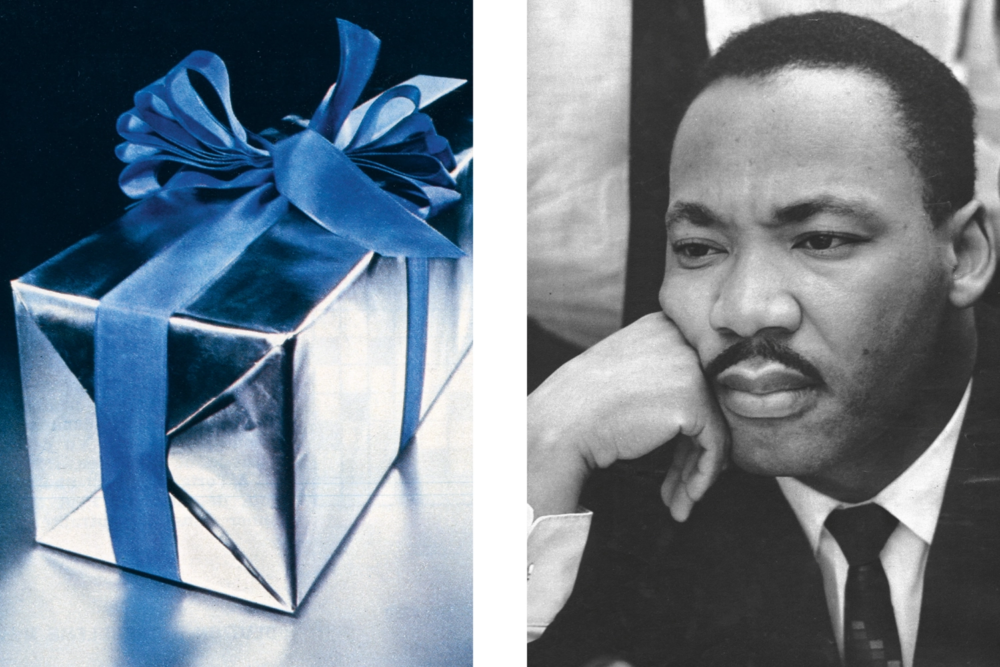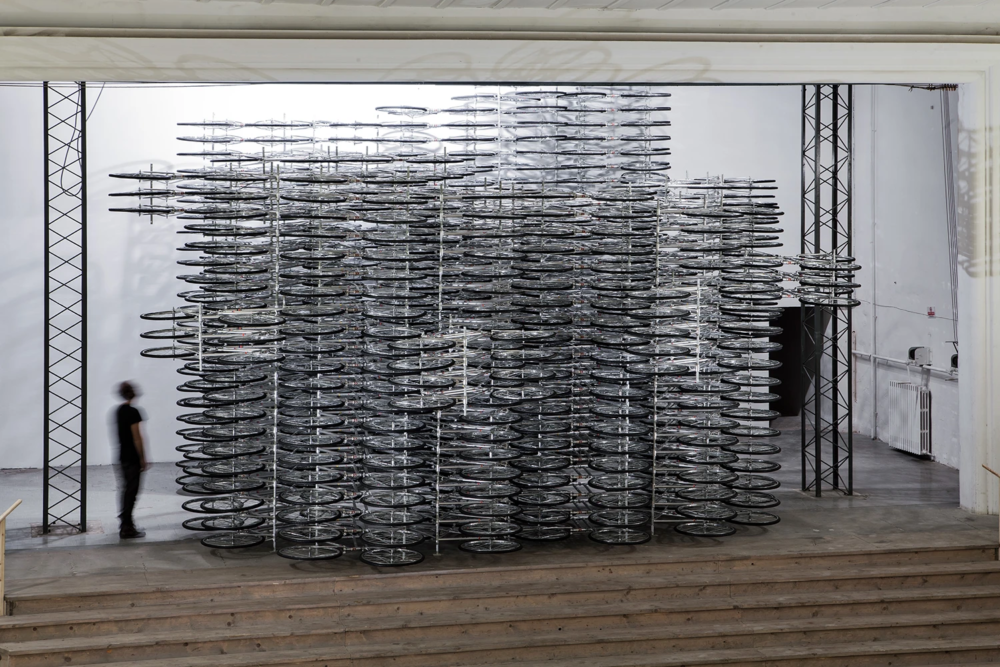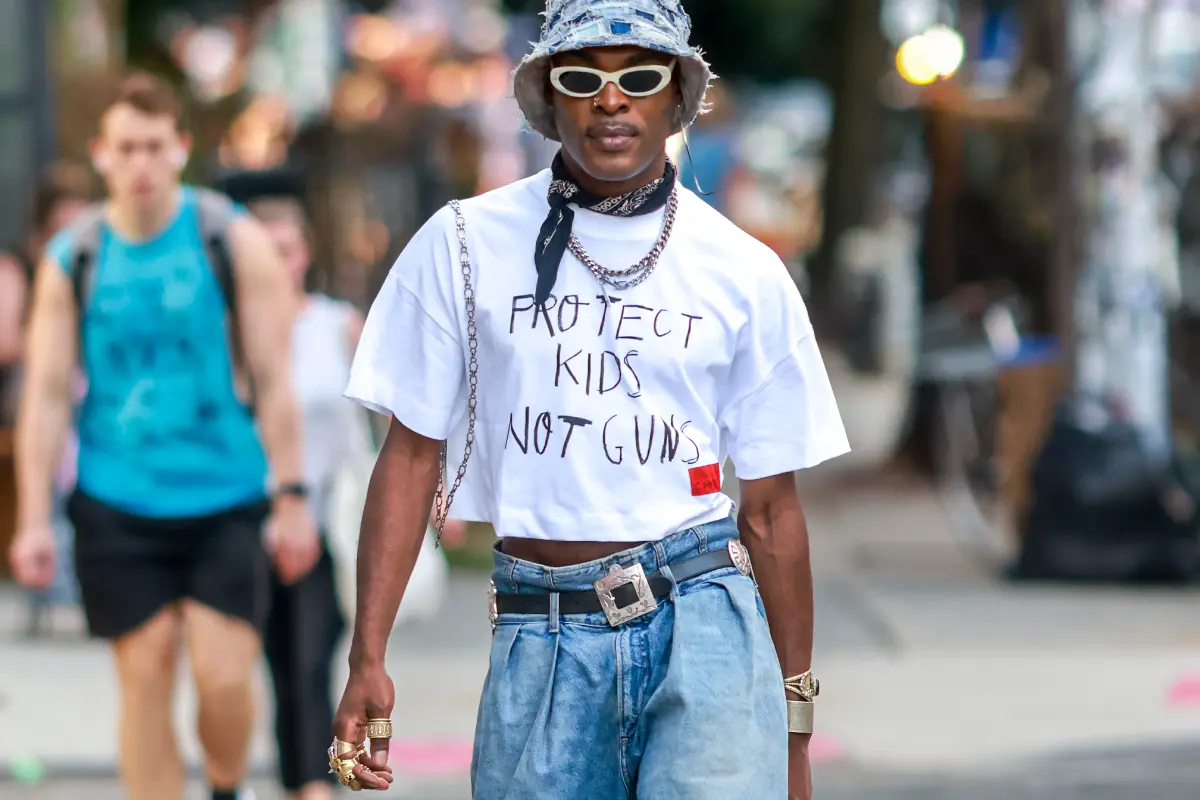
New York in Time: The Book That Encapsulates Near A Decade in Fashion With Johnny Cirillo
Johnny Cirillo joins Lampoon once again to discuss the release of his new book, documenting eight years of New York fashion through street style photography and interviews
Two years ago, when Johnny Cirillo first sat down with Lampoon to discuss the vintage revival’s impact on sustainability, his Instagram page, Watching New York, had 757,000 followers; since then, it’s nearly doubled in size and he has become a recently published author. In a new conversation with Lampoon, Mr Cirillo expounds upon the publication of his first book, Watching New York: Street Style A to Z. The book is a collection of his fashion street style photography and interviews over the last eight years, since the launch of his account. The photographs on occasion will capture celebrities – such as supermodel Gigi Hadid, who wrote the foreword –, but the focus is on the everyday authentic style of New Yorkers.
In the past eight years, New York City and the world have seen significant change, from presidential elections, global pandemics, social rights movements to war. The history of fashion shows the way in which society and clothing work in tandem, in which subcultures use fashion as a symbol and weapon in their movements. In the sixties, the hippies wore flowing silhouettes and peace signs to unite against war and corporations in a symbol of freedom; the following decade, punks used piercings and ripped clothing to protest the norms of polite society. Mr. Cirillo considers how his account and book reflect the changing dynamics of modern fashion in response to an evolving world. He describes the initial process of conceptualising the book as having been inspired by his own annual family photo albums, saying, «I wanted to make a yearbook. I wanted to make a New York City street fashion yearbook». Often, he’ll find himself sorting through his archives to identify what was trending at certain points in time and how things have evolved, and in this way his account has become a kind of photojournalism.
The Lasting Impact of COVID-19 on Fashion
The COVID-19 crisis of 2020 has had lasting impact in fashion from the ways it changed behaviours and preferences in society as a whole, as noted everywhere from major newspapers to academic articles. For Mr. Cirillo, the most enduring trend of the past few years is the movement towards “cozy”: the pandemic forced us inside our homes for months at a time, the major cities saw workwear decline and loungewear boom, and global purchasing preferences shifted towards athleisure. Once restrictions loosened, this style remained strong. «When it was time to go back out, people took that comfort and brought it outside and still did creative things with it… It actually opened up a lot of doors because so many people had nothing to do, and they started learning about so many of their own talents».
Thousands took up sewing and knitting, hobbies that eventually trickled into high fashion. As discussed in his last conversation with Lampoon, this intertwined with the concept of sustainable fashion, as people made things themselves or upcycled vintage pieces. During this time, we saw many designers emerge out of this trend, with names such as Nadine Mosallam and Chet Lo, who found breakout success. And, years later, the trend lives on as athleisure-inspired pieces like Vetements track jackets and Gucci sweatshirts dominate spring 2024’s top runways.
The Micro-Trend: Mob Wives and Sofia Richie
Looking instead towards the most short-lived micro-trends, Mr. Cirillo references the recent Mob wives aesthetic. This came around in early 2024 as a backlash response to the long-standing clean girl and the more recent Sofia Richie inspired ‘Quiet Luxury’. Instead, this look was about bold expression, with heavy, smoky makeup, fur, loud colours and animal print. But Mr, Cirillo notes that this was little more than a flash in the pan: «people got really excited about it and then turned on it so fast. And nobody wanted to see it anymore».
The job of a street style photographer lends itself to the observer of micro-trends that never go beyond the niche sub-group. Two years ago, for example, Mr. Cirillo remembers photographing multiple people in Looney Tunes cartoon graphics before they seemed suddenly to vanish from the streets. «It just went away», Mr. Cirillo said.«It’s almost like people tried, and it didn’t make it, and then it just flooded out». This isn’t the first trend he’s watched rise and fall on the streets of New York with collections of photos of locals adorning band-aids on their faces, seemingly in a tribute to rapper Nelly who sported this look for a decade. But, ultimately, whatever motivates these micro-trends isn’t universal enough to filter out into the mainstream.
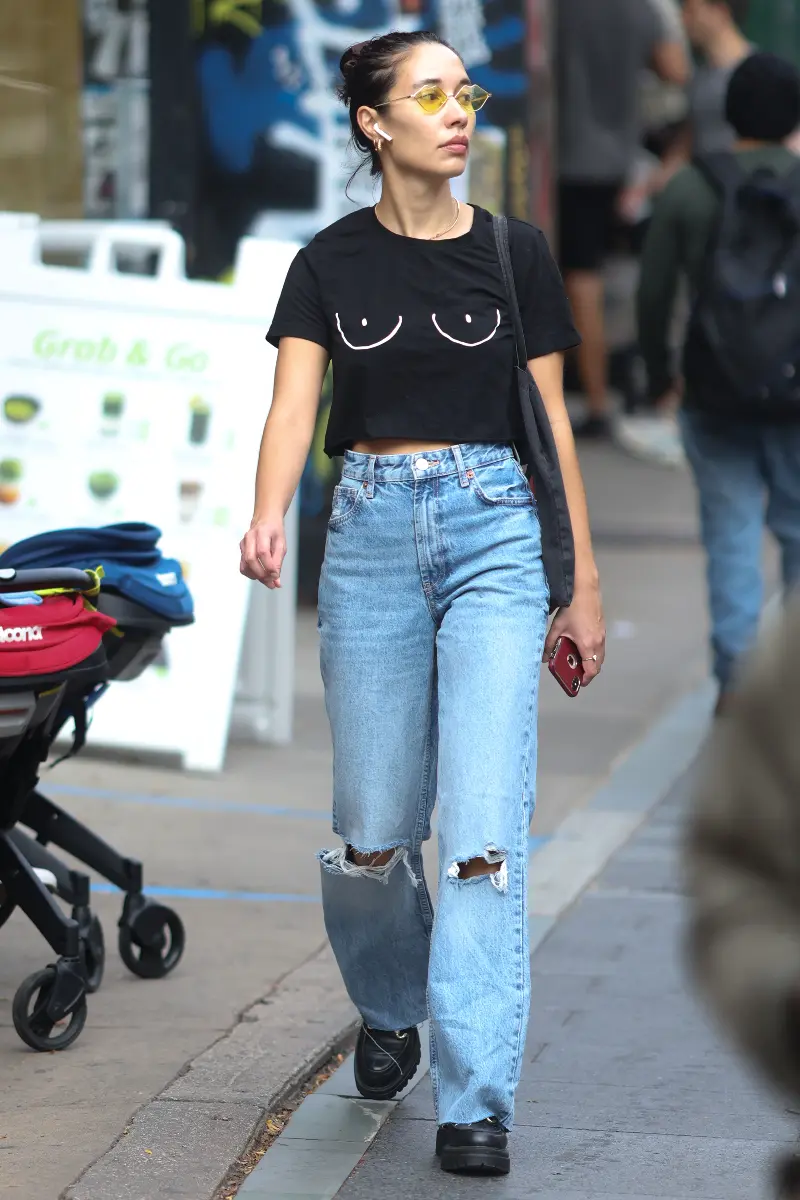
Biden to Barbie: The Role of Politics in Fashion
Inevitability, this is why politics has sat at the heart of many trends and subcultures over the years, again evidenced by groups like the hippies and punks. During the election of Joe Biden and Kamala Harris, New York fashion responded in a literal way with clothes sporting political slogans in support of the two candidates. Similarly, a few years prior, this was seen with the Black Lives Matter movement and the COVID-19 pandemic, as people used these political messages as part of their everyday street style. Equally, there was messaging on the other sides of the political spectrum, and people could use it as «a way for somebody to say what’s on their mind without having to shout it across the room».
Equally, fashion can react in far more subtle ways, as Mr. Cirillo saw last summer in response to the Greta Gerwig box-office hit ‘Barbie’. The film, although a comedy, tackled heavy themes stemming from patriarchal culture and «made the city explode in pink» as a symbol in support of the film’s message. Mr. Cirillo and his partner Kristen note the ways in which women also started responding to the 2016 #metoo movement: «we started definitely noticing a lot more sheer, showing off their body, being less apologetic about that». Across the globe, women shared their stories and found their voices. This reverberated into fashion with a desire to dress less modestly and doing so with confidence. Mrs Cirillo elaborates on this sentiment, explaining, «I’m going to wear what I want. You behave, this is me expressing myself. It’s not for you. It’s for me».
Fashion and The Influence of The Individual
Throughout the book, Mr. Cirillo includes snippets and conversations with some of his most interesting interviews, citing his personal favourite with the 1985 ‘Goonies’ actor Corey Feldman, as they discussed the way in which his style changed through personal and career challenges. And through these interviews, we see on a micro-level how fashion has been used as expression towards more personal difficulties. Actor Darnell Bernard opened up about his childhood spent in a group home and how his search for acceptance and identity brought him into the world of fashion. A local designer, Monday Blues, recounts her time homeless on the streets of Chicago and how one day she found and repurposed discarded burlap sacks outside a Starbucks. Today, this is the foundation of her self-titled brand.
Mr. Cirillo even found himself chatting to Barron Claiborne, the photographer who took the iconic ‘King of New York’ portrait of recently passed rapper Biggie Smalls. The photo was the last taken of the legendary hip hop artist, who lives on as a core influence on music and fashion in New York. Mr Cirillo says, «Everybody has a story. When you stop and just chat with people, you start realizing that there’s so much more to people than just what it is that they’re wearing, and you just dig a little bit. All of a sudden, all these interesting stories come out». He believes that these stories and the way they’re expressed in fashion are a way to connect with other people and relate, taking on a meaning as big as any sub-culture.
Bringing New York to The World
Of his broader aspirations for the new book, Mr. Cirillo said, «I think the main thing that I’m hoping that they get out of it is that it helps them feel more comfortable being who they are by seeing themselves in somebody else… I hope that it’ll help people to break out of their shell a little bit». The foreword, written by international supermodel Gigi Hadid echoes this sentiment and the importance of the book and Mr Cirillo to bringing the story of New York to the world.
Mr. Cirillo identifies that the key to seeing these trends emerge is the process of looking back, explaining that «You’re seeing so many things unfold in front of you at the same time that it’s hard to pick up». This book provides a source to do so and, through his photography, the world can continue to watch this fashion hub evolve.
About Johnny Cirillo
Photographer, creator of @watchingnewyork (c.2016) and author of ‘Watching New York: Street Style A to Z’ available to purchase on Amazon. His first ever book, compiles a collection of street style photographs and interview snippets, detailing the changing trends of local New York fashion.
Sabine Henshall
